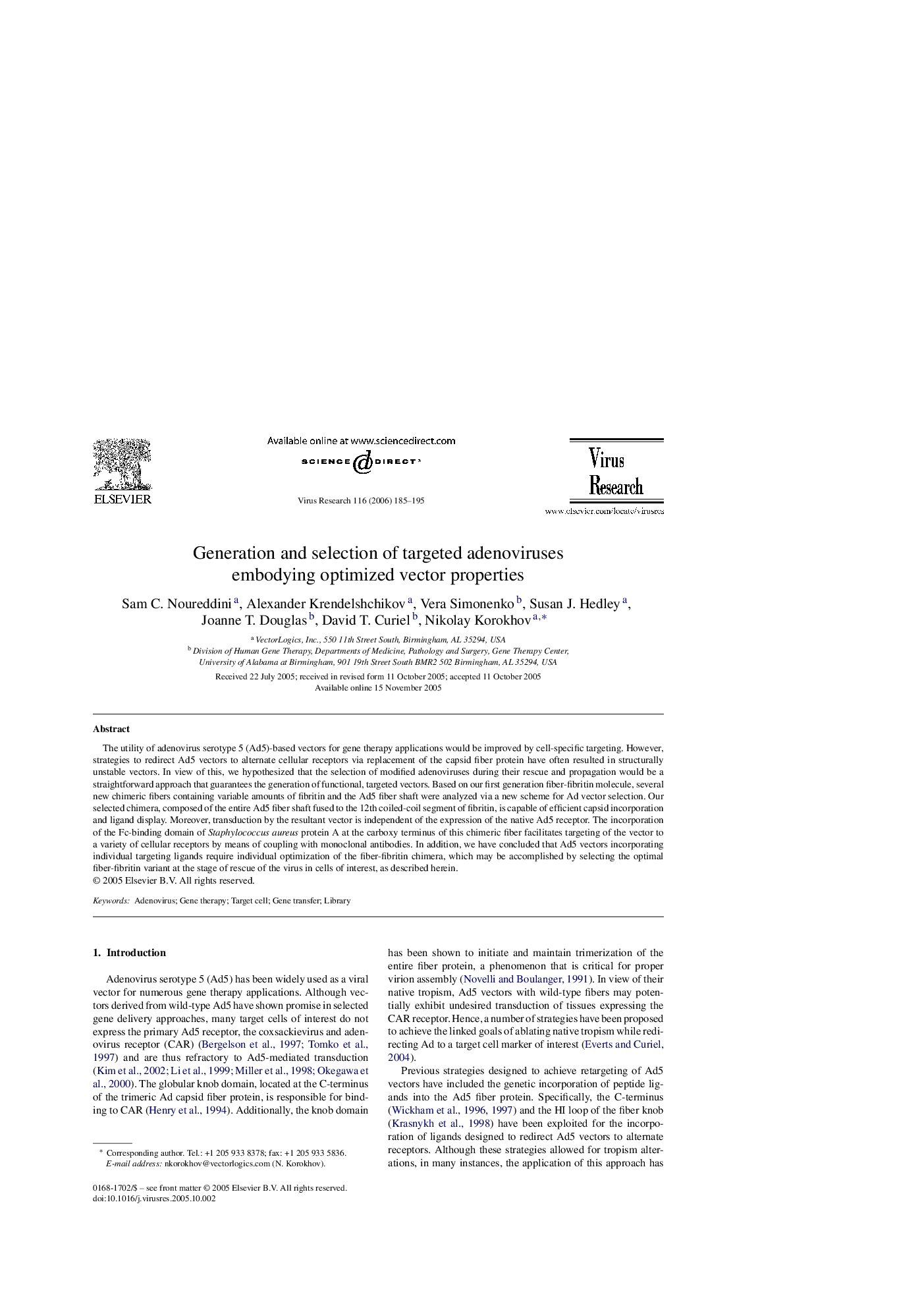| Article ID | Journal | Published Year | Pages | File Type |
|---|---|---|---|---|
| 3431459 | Virus Research | 2006 | 11 Pages |
Abstract
The utility of adenovirus serotype 5 (Ad5)-based vectors for gene therapy applications would be improved by cell-specific targeting. However, strategies to redirect Ad5 vectors to alternate cellular receptors via replacement of the capsid fiber protein have often resulted in structurally unstable vectors. In view of this, we hypothesized that the selection of modified adenoviruses during their rescue and propagation would be a straightforward approach that guarantees the generation of functional, targeted vectors. Based on our first generation fiber-fibritin molecule, several new chimeric fibers containing variable amounts of fibritin and the Ad5 fiber shaft were analyzed via a new scheme for Ad vector selection. Our selected chimera, composed of the entire Ad5 fiber shaft fused to the 12th coiled-coil segment of fibritin, is capable of efficient capsid incorporation and ligand display. Moreover, transduction by the resultant vector is independent of the expression of the native Ad5 receptor. The incorporation of the Fc-binding domain of Staphylococcus aureus protein A at the carboxy terminus of this chimeric fiber facilitates targeting of the vector to a variety of cellular receptors by means of coupling with monoclonal antibodies. In addition, we have concluded that Ad5 vectors incorporating individual targeting ligands require individual optimization of the fiber-fibritin chimera, which may be accomplished by selecting the optimal fiber-fibritin variant at the stage of rescue of the virus in cells of interest, as described herein.
Related Topics
Life Sciences
Immunology and Microbiology
Virology
Authors
Sam C. Noureddini, Alexander Krendelshchikov, Vera Simonenko, Susan J. Hedley, Joanne T. Douglas, David T. Curiel, Nikolay Korokhov,
